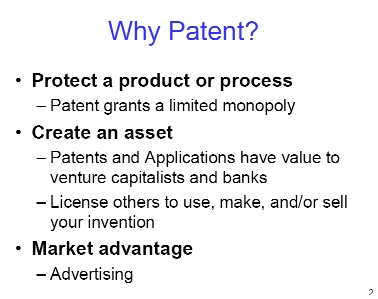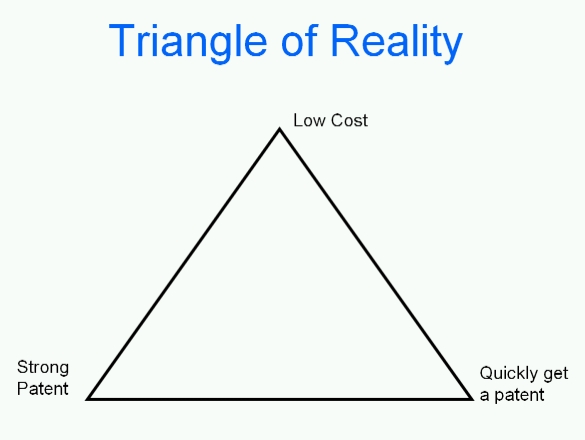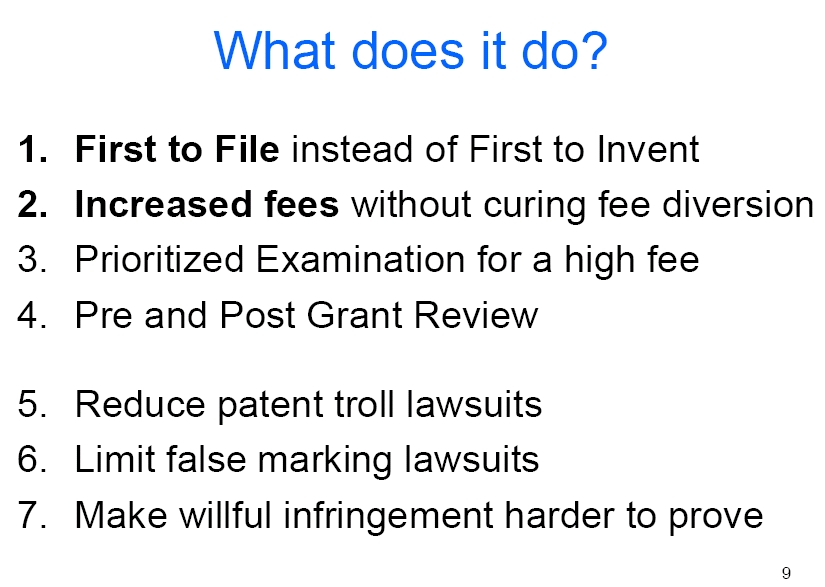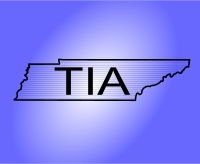January 2012 Patent update
The January 21 meeting of the TIA featured local patent attorney Tom Kulaga. He spoke about the recent Patent Reform Act as it affects the patent process and inventors.
Knoxville patent attorney Tom Kulaga spoke about patents and how the recently enacted Patent Reform Act affects inventors.
 Tom first discussed the various reasons for obtaining a patent. Most independent inventors want a patent to protect their invention, to prevent others from copying it. A patent gives the inventor a limited monopoly that allows the inventor to prevent others from copying for a set term.
Tom first discussed the various reasons for obtaining a patent. Most independent inventors want a patent to protect their invention, to prevent others from copying it. A patent gives the inventor a limited monopoly that allows the inventor to prevent others from copying for a set term.
Many seek a patent because it is a business asset. A patent can be mortgaged, sold, or licensed, just like many other business assets. Venture capitalists and investors usually look favorably at businesses that own patents.
Another reason some want a patent, or at least patent pending status, is for a marketing advantage. Advertising that a product is "Patent Pending" is one way to distinguish a product from competing products.
Tom then discussed patent strategies. Before filing a patent application, inventors need to consider the business objectives and the potential return on investment (ROI). Seeking a patent is a business decision and should be undertaken only after being fully addressed in a business plan.
 Factors that need to be considered when deciding if a patent is worth pursuing include
Factors that need to be considered when deciding if a patent is worth pursuing include
1. When is the patent needed?
2. How strong should the patent be? (Why is a patent needed)
3. How much can be spent on obtaining a patent?
Of these factors, reality tells us only two can be controlled. The Triangle of Reality shows the relationship of a low cost patent to a strong patent to a patent obtained quickly.
Pick two and only two. It is not possible to obtain a low cost patent that is strong and obtained quickly. One of those three factors must be given up.
Tom next described the two types of patents: utility patents and design patents. A utility patent protects the functional aspects of the invention, that is, how the invention works. Utility patents have a term of 20 years, measured from the filing date, usually. They must also be renewed by paying a fee 4, 8 and 12 years after the patent issues.
Design patents protect the aesthetic appearance of an invention. Design patents have a term of 14 years from their issue date and do not require paying any renewal fees.
Comparing the two, utility patents take longer to obtain and cost much more than design patents. Utility patents are often thought to be stronger because they typically offer broader protection and have a slightly longer term.
In order to obtain either type of patent, two requirements must be met. The invention must be new (never done before) and it must not be obvious based on what has been done before. Another requirement is that a patent application must be filed within 12 months of the first public disclosure or the first offer to sell a product embodying the invention. At least, those were the requirements until the Patent Reform Act was enacted in September 2011.
In one of the few displays of true bipartisanship, the Patent Reform Act sailed through Congress in 2011, although patent reform has been bouncing around in Washington, DC, since 2005. The main advocates of the Patent Reform Act were large corporations with large patent portfolios. Money talks and it also controls Washington.
 First to File
First to File
The Patent Reform Act changes the current First to Invent system in the United States to a First to File system. This is a sweeping change to the patent law and affects inventors greatly. The First to File system becomes effective in March 2013.
The 12 month grace period to file a patent application is gone. An inventor must file a patent application before any public use or before offering for sale any products embodying the invention.
Public disclosures within 12 months of filing a patent application are still available. In fact, it may be advantageous to make a public disclosure as soon as possible before filing an application because that will give the inventor an advantage if someone files first, but after the public disclosure.
Fee Diversion and Fee Increase
For several years the Patent and Trademark Office (PTO) has charged more than it spends. The excess fees collected by the PTO have been diverted to the general fund and used for non-patent purposes. The first bills introduced for patent reform sought to do away with fee diversion and allow the PTO to use the fees it collects to expand and do a better job with patents. The Patent Reform Act as finally passed in Congress keeps fee diversion. It also raised the fees charged by the PTO by about 15%. So, not only does the PTO charge more than it costs to provide patent services, they are now charging even more. In other words, inventors had a tax increase.
The Patent Reform Act creates a new fee discount that applies to micro-entities. Any person or company with less than $150,000 gross income and who has filed no more than 4 patent applications is eligible for a 50% discount from the small entity fees. So, for filing a provisional application, instead of paying the new, increased filing fee of $125 as a small entity, a micro-entity pays a filing fee of $62.50. This minor discount is not yet available because the PTO has not yet worked out the rules.
Prioritized Examination: For those inventors with the money, the PTO will have available expedited or prioritized examination. For a fee of $2400 ($1200 for a micro-entity), the PTO will grant a final disposition within 12 months of filing. The PTO plans on limiting prioritized examination to the first 10,000 patent applications each year.
Pre and Post Grant Review
Effective September 2012 are new procedures for contesting patent applications and patents. Anyone can submit prior art to the Patent Office against a patent application before the first Office Action. This is a great way for corporations to help the PTO shoot down patents or make the patent application process too expensive for independent inventors.
The Act also creates a new way for others to contest issued patents. For the first nine months after a patent issues, anyone can contest the patent on any grounds. After the initial nine month period, the grounds to contest a patent are limited.
Patent Troll Lawsuits
The Patent Reform Act restricts the ability of patent owners to sue others. One tactic of "patent trolls" is to sue multiple defendants with one lawsuit. There have been cases where over 100 companies were sued at once for patent infringement. The Act restricts the number of defendants that can be sued at under one lawsuit.
False Marking: Recently, some opportunists have attempted to profit from a little known law about false marking of products. It is illegal to mark a product with a patent number when the product is not protected by a patent. Many companies do not remove patent numbers from products after the patent expires. Under the previous law, for each offense of false marking, the maximum fine was $500. Under the Act, leaving expired patent numbers on a product is no longer false marking. Also, only persons who suffer from competitive damage may sue for false marking, whereas, previously, anyone could file suit.
Willful Infringement
The Act codifies willful infringement by requiring proof with clear and convincing evidence that the accused infringer's conduct was objectively reckless. That is, the infringer was acting despite an objectively high likelihood that his actions constituted infringement of a valid patent, and the risk was either known or so obvious that it should have been known to the accused infringer. This is one more step in making it more difficult and more expensive to enforce patents.
Related Links
- H.R. 1249: Leahy-Smith America Invents Act
- Patent Reform Act Summary
- Patent Reform Act Full Text
- Inventive Step: PTO Numbers at End of FY2011 provides info on PTO statistics: 48% of patent applications issue as patents without filing an RCE, continuation, or appeal. That percentage jumps to 64% when including applications with an RCE (request for continued examination) filed.
- Login to post comments

